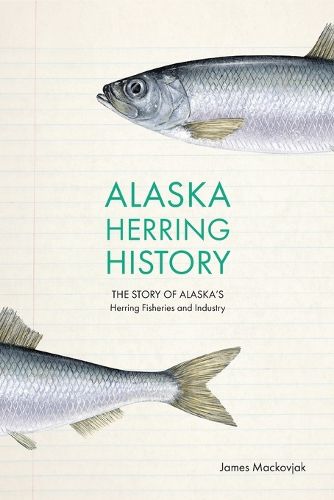Readings Newsletter
Become a Readings Member to make your shopping experience even easier.
Sign in or sign up for free!
You’re not far away from qualifying for FREE standard shipping within Australia
You’ve qualified for FREE standard shipping within Australia
The cart is loading…






Alaska Herring History is a thoroughly researched, well-documented, and comprehensive chronicle of Alaska’s herring fisheries. Author James Mackovjak describes the evolution of these fisheries from the late nineteenth century to the present, including harvest, processing, markets, and sustained-yield management considerations. The book is divided into three parts based on the purposes for which herring have been harvested. Part I is a history of the reduction (fertilizer/fish meal/fish oil) and cured (salted) herring industries and the
bait-herring fisheries; part II is a history of the roe-herring fisheries in Southeast Alaska, Prince William Sound, Kodiak Island, lower Cook Inlet, Togiak, and Norton Sound; and part III is a history of the herring spawn-on-kelp industry. Historical and contemporary photos and illustrations–as well as graphs and charts that help summarize the development and, in some cases, the demise of the fisheries–augment this detailed look at the evolution of Alaska’s herring fisheries.
Balancing scientific details, historical facts, and personal anecdotes from experts in the field, Alaska Herring History will be of interest to historians, social scientists, biologists, and fishery managers and makes an important contribution to Alaska fisheries literature.
$9.00 standard shipping within Australia
FREE standard shipping within Australia for orders over $100.00
Express & International shipping calculated at checkout
Alaska Herring History is a thoroughly researched, well-documented, and comprehensive chronicle of Alaska’s herring fisheries. Author James Mackovjak describes the evolution of these fisheries from the late nineteenth century to the present, including harvest, processing, markets, and sustained-yield management considerations. The book is divided into three parts based on the purposes for which herring have been harvested. Part I is a history of the reduction (fertilizer/fish meal/fish oil) and cured (salted) herring industries and the
bait-herring fisheries; part II is a history of the roe-herring fisheries in Southeast Alaska, Prince William Sound, Kodiak Island, lower Cook Inlet, Togiak, and Norton Sound; and part III is a history of the herring spawn-on-kelp industry. Historical and contemporary photos and illustrations–as well as graphs and charts that help summarize the development and, in some cases, the demise of the fisheries–augment this detailed look at the evolution of Alaska’s herring fisheries.
Balancing scientific details, historical facts, and personal anecdotes from experts in the field, Alaska Herring History will be of interest to historians, social scientists, biologists, and fishery managers and makes an important contribution to Alaska fisheries literature.